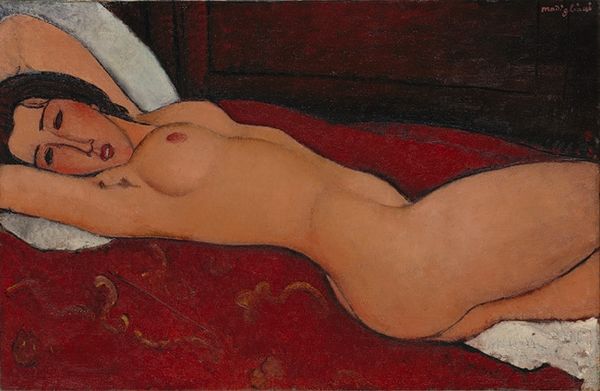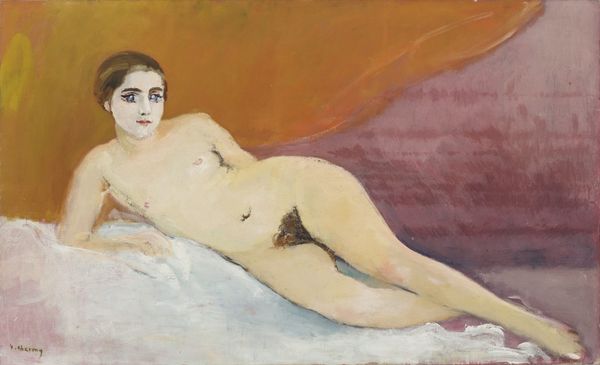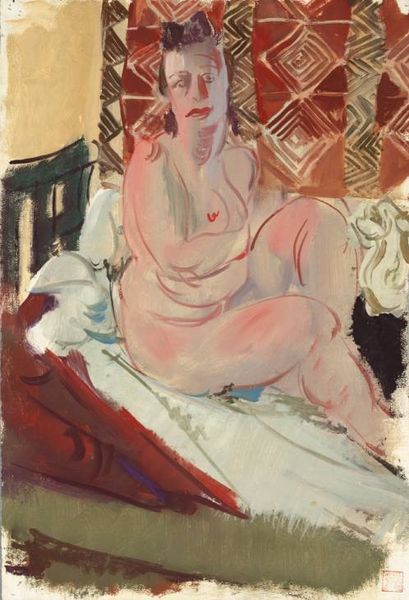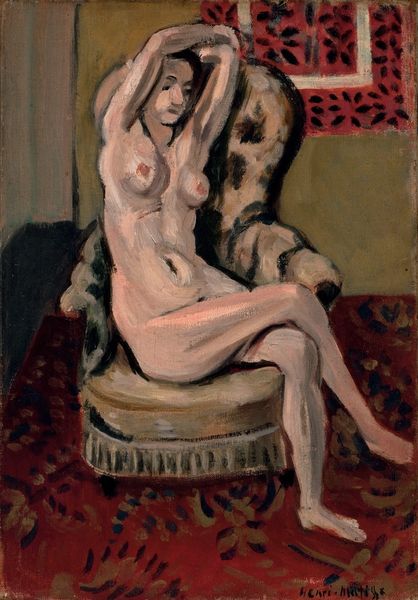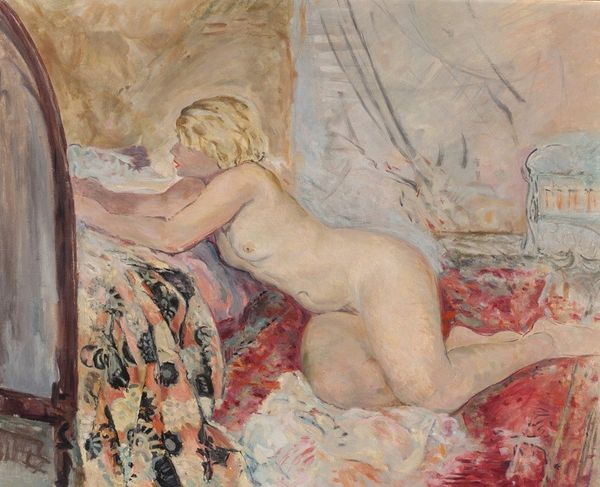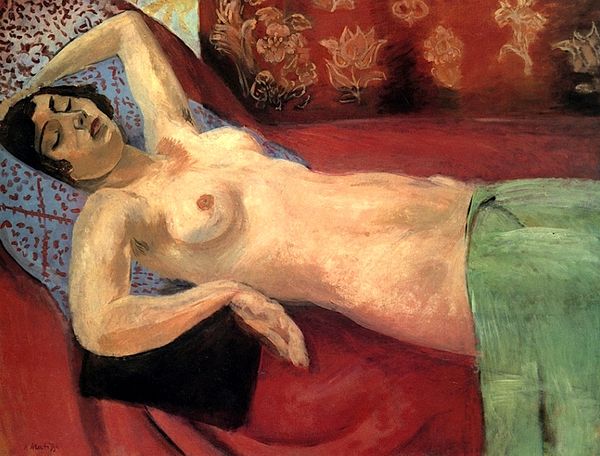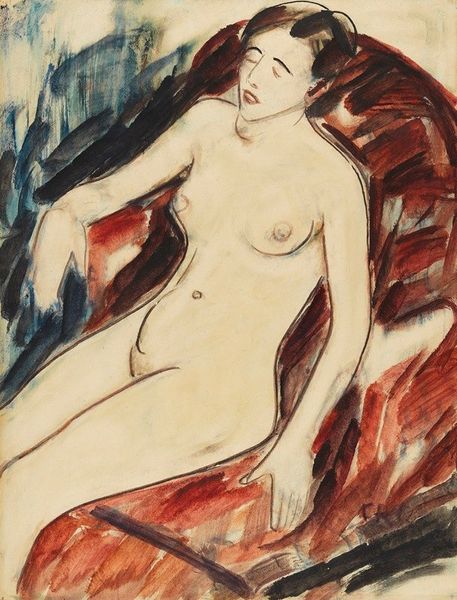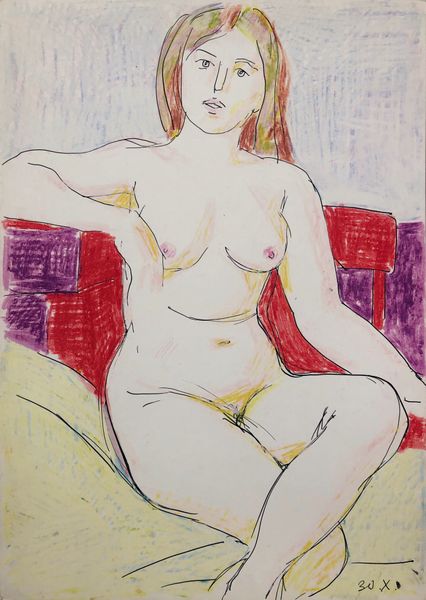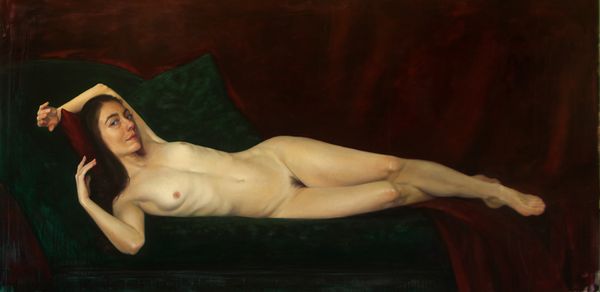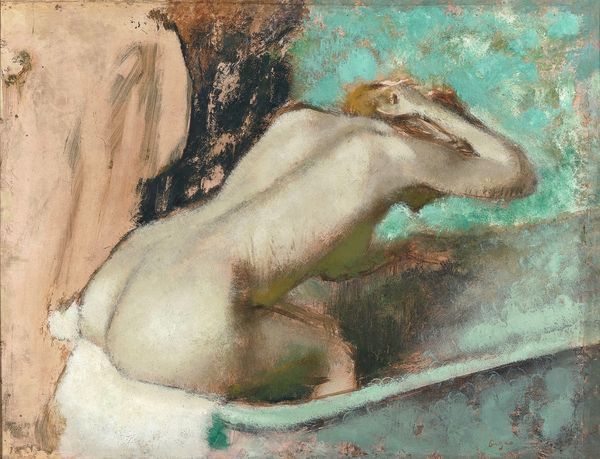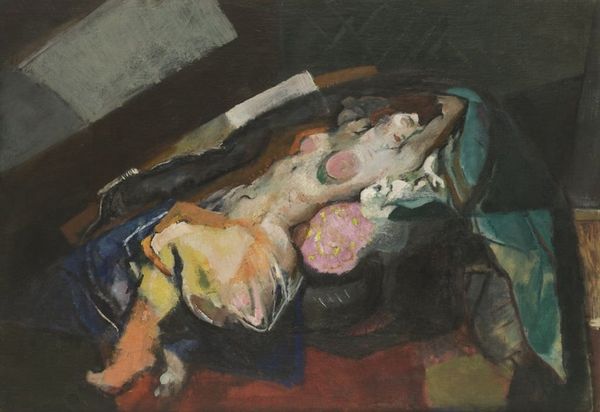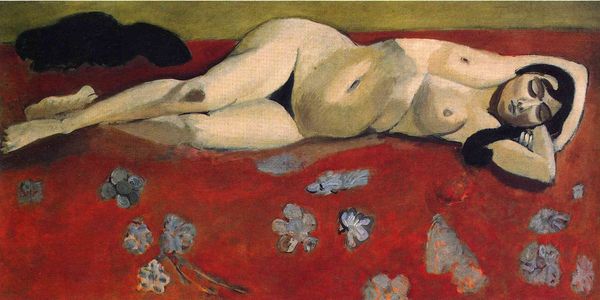
Copyright: © ADAGP, Paris
Curator: Charmy's "Nude on Red Sofa; Sleeping Nude," painted around 1925, feels strikingly intimate. The way she's captured the soft flesh tones against the bold red of the sofa is quite compelling. What catches your eye in this work? Editor: The intense redness! It creates such a dramatic contrast with the pale skin. And her posture seems both vulnerable and powerful. How would this painting have been received in its time? Curator: That's a fantastic question! In the 1920s, the art world was experiencing rapid shifts. Female artists like Charmy were increasingly pushing boundaries. But a nude, even a "sleeping nude", by a woman artist, still carried a distinct charge. Were these portrayals offering a counter-narrative to the male gaze prevalent at that time, and if so, how successfully? Editor: So, did her perspective as a female artist give her more agency in how she portrayed the nude? Curator: Precisely. One must consider how the rise of intimism in genre paintings contributed to art historical ideas around femininity at the time, because Charmy subverts that trope here. Is she merely showing a woman in a private moment, or is she challenging the established representation of female form? Consider the lack of idealization of the body. Editor: I didn’t notice that initially. She wasn't painting an ideal; she painted a real person, sleeping. Curator: Exactly. The “realness” speaks to shifting cultural attitudes regarding femininity and artistic freedom. What about its exhibition history; where would a work like this be displayed, and how might that affect its reception? Editor: I hadn’t thought about that! It makes you wonder who the intended audience was, and how Charmy herself positioned her work in relation to her contemporaries. Curator: Exactly. And considering the limited recognition that women artists were receiving during her lifetime, we can understand just how culturally relevant works like this are, as she boldly exhibited it in the Salon des Indépendants of the day. Editor: So it's more than just a pretty picture; it’s a quiet statement of artistic independence and a renegotiation of power dynamics! Curator: Precisely! And appreciating that context truly enhances our viewing experience, wouldn’t you agree?
Comments
No comments
Be the first to comment and join the conversation on the ultimate creative platform.
